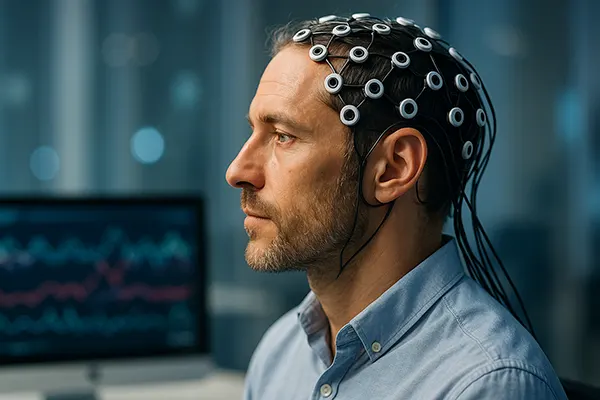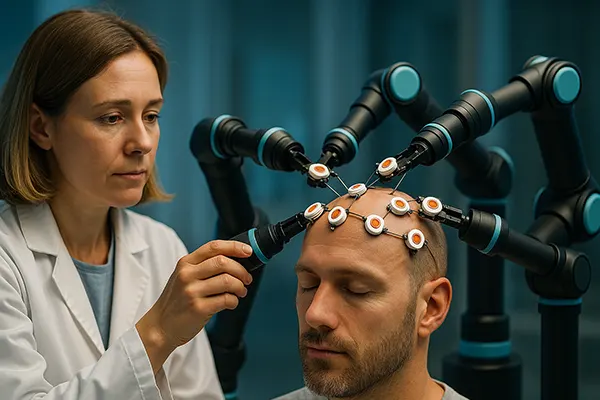Next-Generation Neural Interfaces: Towards Non-Invasive Telepathy

In recent years, neural interfaces have made remarkable progress, bridging the gap between the human brain and external devices. While invasive technologies such as brain implants continue to demonstrate high precision in clinical trials, a paradigm shift is emerging with non-invasive solutions that aim to offer similar performance without surgical procedures. As of June 2025, this field is no longer limited to academic speculation – real-world applications are being piloted across healthcare, communication, and consumer electronics.
The Technological Foundation of Non-Invasive Neural Interfaces
Non-invasive neural interfaces operate by detecting and decoding brain activity using sensors placed on or near the scalp. Techniques such as electroencephalography (EEG), magnetoencephalography (MEG), and functional near-infrared spectroscopy (fNIRS) are among the most widely explored. These methods allow researchers to interpret neural signals associated with thoughts, emotions, and intentions without penetrating the skull.
In 2025, high-resolution EEG arrays combined with machine learning algorithms have reached a point where decoding simple phrases, emotional states, and binary commands is feasible in real-time. This is achieved by leveraging neural decoding models trained on massive datasets, enabling systems to learn how individual brains encode information.
Moreover, hybrid approaches that combine multiple signal acquisition techniques are being developed to enhance accuracy. For example, systems integrating EEG with eye-tracking or muscular signals from facial micro-expressions can improve context understanding, making neural communication more intuitive and precise.
Leading Innovations and Research Institutions
Institutions like the University of California, Berkeley, and MIT Media Lab are pioneering projects in non-invasive neural communication. In Europe, the Human Brain Project continues to fund large-scale experiments aimed at decoding language-related neural patterns using non-contact biosensors.
Startups such as NextMind (acquired by Snap Inc.) and Cognixion are commercialising wearable headsets that allow users to control digital devices through thought alone. These companies have significantly contributed to reducing the cost and complexity of non-invasive neurotech.
In Asia, research at the RIKEN Institute in Japan has demonstrated a prototype headset capable of recognising over 100 distinct user commands with an average latency of less than 500 milliseconds. This opens doors to practical applications in smart homes, augmented reality, and even virtual meetings powered by mental intent.
Applications Across Communication, Accessibility, and Health
The promise of non-invasive neural interfaces is particularly compelling in the realm of communication. For individuals with speech or mobility impairments, these systems offer the potential to express thoughts through brain-computer interaction without relying on verbal or motor input.
Medical use cases are expanding rapidly. In neurorehabilitation, interfaces enable patients recovering from strokes to interact with rehabilitation systems using mental commands, speeding up recovery and motivation. Such systems also help clinicians monitor patient engagement and fatigue in real-time.
In the broader consumer space, experimental applications include using neural signals to control smart appliances, interact with digital assistants, or navigate virtual environments. While these are still emerging, 2025 has seen an uptick in interest from major tech firms integrating EEG-based input options into wearable devices and head-mounted displays.
Data Security and Ethical Considerations
As with any technology that collects biological data, privacy and ethical safeguards are critical. Non-invasive neural interfaces capture deeply personal information, such as thoughts, intentions, and emotional states, which must be protected from misuse.
Organisations including IEEE and the OECD have issued updated ethical guidelines in 2025 recommending strict consent protocols, localised data processing, and transparency in algorithmic decision-making. These frameworks aim to prevent exploitation and ensure user autonomy in neurotechnology adoption.
Additionally, there are ongoing discussions within regulatory bodies like the European Medicines Agency and the FDA about classifying such devices and defining standardised testing requirements. The goal is to balance innovation with responsibility, especially in healthcare and assistive communication domains.

Future Prospects: From Thought Transmission to Ambient Intelligence
Looking forward, the ambition of next-generation neural interfaces is not only to interpret thoughts but to enable seamless, real-time thought-to-thought communication – what some researchers describe as “non-invasive telepathy.” Although this remains a long-term vision, 2025 has witnessed promising milestones towards its realisation.
One such development is the use of generative AI models integrated with neural decoding systems. These models help reconstruct imagined speech or visual imagery from brain signals, effectively translating thoughts into spoken words or images on a screen. Although imperfect, these prototypes already show over 60% semantic accuracy in lab environments.
There’s also active exploration into ambient intelligence systems that anticipate user needs based on neural input. For example, future smart environments may adjust lighting, music, or even digital interfaces in response to users’ mood or concentration levels, fostering environments tailored to mental states.
Challenges in Scaling and User Adoption
Despite rapid progress, several barriers remain. Calibration time is still an issue, with many systems requiring extended user-specific training before reaching acceptable accuracy. Moreover, signal quality can be affected by hair, movement, and ambient noise, reducing reliability in uncontrolled settings.
Comfort and aesthetics are another hurdle. While many commercial devices strive for minimalism, wearing EEG headsets for extended periods can still be cumbersome. Innovations in dry electrodes and flexible materials may offer solutions in the coming years.
Lastly, public perception and trust must be cultivated. The idea of brain-reading technologies, even when non-invasive, may evoke discomfort or fear. Transparent communication, regulatory oversight, and demonstrable utility are essential to drive meaningful adoption at scale.
